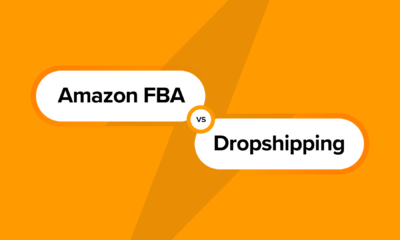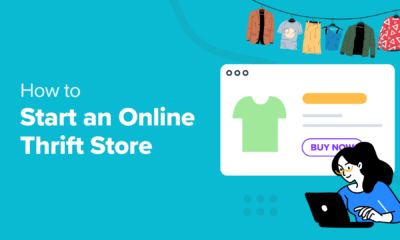Product recommendations, either surfaced in real time online or populating re-targeting emails, are nothing new. But their often based on demographic information (such as age, gender and location) or generic responses to online behavior (she looked at socks, show her some other socks, the most popular socks, discounted socks).
An example like Inkbox helps to indicate how Crossing Minds begins to differentiate itself from other recommendation engines. Inkbox is an online seller of temporary tattoos, advertised as realistic, waterproof and good for one-to-two weeks. But the tattoos are not from one single source; they are designed by an international portfolio of artists (you can also design your own) and that means they cover a vast range, not only of subjects, but of styles. The biggest challenge for Inkbox? Steering new customers to the best tattoos for them personally out of a catalog with literally tens of thousands of SKUs.
You’ll get a couple of thousand flowers
Paul Kus, Inkbox’s senior manager of retention marketing, put it starkly. “Coming to our website having a catalog of tens of thousands of different designs makes it extremely difficult. Like if you type ‘flowers’ on our website, you’re going to get a couple of thousand — not just different flowers, but different styles of the same flower.” In other words, search wasn’t necessarily finding the products that would lead to conversions.
The solution has been to use Crossing Minds’ algorithms in a range of different contexts, on site and in email programs, to create recommendations based not on who people are but on how they behave.
Alexandre Robicquet, Crossing Minds’ co-founder, uses the analogy of selling records or CDs. “If you want to evolve in a world that is GDPR-compliant, other solutions tend to take short-cuts. One obvious short-cut is asking for an age or a gender to put people in a box,” he said. But if you’re trying to sell music to people, what is the most valuable of two different types of information? “Either where they live, their age and their gender, or the first three records or CDs they look at.” The answer, admittedly, is obvious.
“Ninety-nine percent of the Fortune 500s are brainwashed to want to know where (people) live. No, I want to see what they’re clicking on and that should trigger live personalization.”
Starting off with a quiz
In other words, recommendations generated by the Crossing Minds algorithms are focused not on who people are but what they just did. That doesn’t help so much with brand new customers, but Inkbox and Crossing Minds figured out how to kickstart the process. “The first thing that came to mind was an onboarding welcome quiz,” said Kus. “Ask four questions — not about a person’s identity, location or age — but about tattoos. What type of styles do you gravitate towards? And they click those styles. The second questions would be, what type of categories do you like?” A handful of questions is enough to begin profiling the visitor’s taste.
“In a nutshell,” said Robicquet, “after three clicks on three different products, we can start presenting recommendations that are really quite accurate.”
Get the daily newsletter digital marketers rely on.
Tattoos picked for you
Another feature Inkbox created, based on Crossing Minds algorithms, is simply called “Picked for you.” The section is permanently there when users visit the site, Kus explained, but it updates every five minutes based on user actions. “One of the things that always jumps out at me is how do I get the right tattoo to the right person at the right time? It’s, something we’ve been struggling with until Crossing Minds got there,” he said.
They also introduced a “Shop Similar” button that visitors can use to call up recommendations. Robicquet is keen to emphasize that this too is based on user activity; it doesn’t just call up products pre-classified as similar. “They use our algorithms so that everybody will have a very different Shop Similar based on what they clicked two pages ago, three pages ago,” he explained. “That matters, because three pages ago they might have given you a much better idea of the style they like, rather than just being on a bird tattoo page. Now I’m going to show you birds with this specific style.”
Crossing Minds emerged from AI research Robicquet has been conducting at Stanford University. “We spun off the company in 2017 out of Stanford based on a paper — the concept that we could provide recommendations across many different domains because we could leverage people’s tastes much more thoroughly and thoughtfully than many other solutions. There is a lot of noise out there when it comes to recommendations and a lot of solutions saturating the market, but there’s a huge misunderstanding in the market when it comes to what good recommendations should be doing.”
Read next: How Blackcart’s ‘try-before-you-buy’ software is helping Mohala sell sunglasses
Seeing a significant increase in conversion
One thing recommendation engines should be doing, according to Robicquet, is building features specifically tailored to the e-commerce experiences clients are seeking to deliver. “Whatever solution we provide is purely and completely tailored to the business — leverage what data you have and adapt to use cases.” The result, he said, is an average doubling of sales.”People think this is too good to be true.”
Results confirmed by Inkbox include:
- A 440% increase in conversion rate with website personalization.
- A 69% average increase in cold start conversion rate.
- A 250% increase in click-through rate with tailored emails.
In fact, Inbox first trialed the Crossing Minds algorithms in their email channel, targeting customers they already had some basic information about. “We just moved to a new ESP so we’re in the middle of moving over and bringing new algorithms into our email eco-system,” said Kus. “Currently, one of the really valuable things we started using was on our post-purchase journey — someone would purchase a couple of tattoos. We ping Crossing Minds’ algorithm (to ask) based on their previous order, what are the next tattoos they should get? And that’s how we’re using it in a post-purchase journey world.”
Up next, they’ll be using on-site behavior to create dedicated emails for re-targeting shoppers 30 or 60 days “down the road.” Anyone who visits Inkbox’s website will quickly learn that the brand is also able to re-target visitors on social media channels, but this is not based on the Crossing Minds solution.
Differentiation in the recommendations market
Again, product recommendations are nothing new. It’s almost a standard feature with e-commerce and digital experience platforms. We asked Robicquet why Crossing Minds is different. The recommendation component in e-commerce suites, he said, is usually driven by the demand of the market: “Hey, we also need that. But they don’t always realize how much work recommendations take, and sometimes they mix up search and recommendations.”
Surfacing the most popular or the most recent product is, by definition, a recommendation, he agrees. “But it’s not personalized,” he continued. “If you want to reach quality for recommendation you need to be very thoughtful and build everything yourself. We own it, we built it and we’ll make it work for your very unique business.”






































You must be logged in to post a comment Login